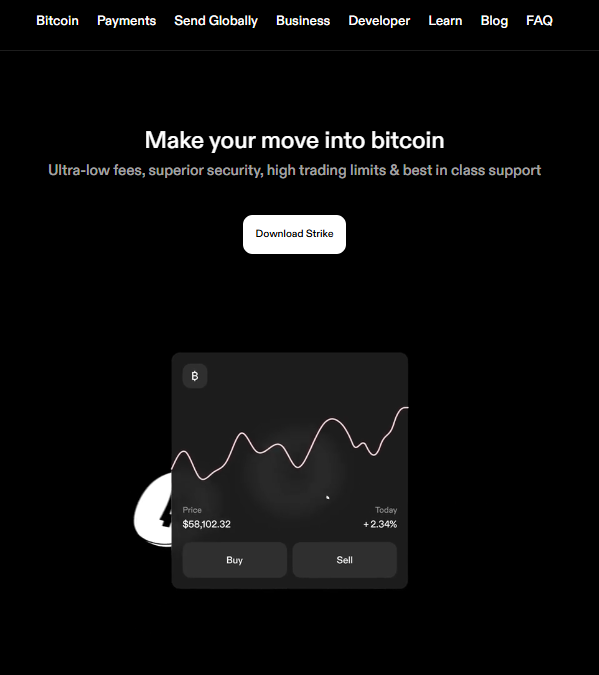For More Free Videos, Subscribe to the Rhodes Brothers YouTube Channel.
“The best investment you can make is in yourself. The more you learn, the more you earn.” – Warren Buffett

Michael Saylor, the Executive Chairman of MicroStrategy, embodies this quote like few others. His Bitcoin strategy has turned heads in the financial world, sparking curiosity, debate, and even admiration. Whether you’re a seasoned investor, a crypto enthusiast, or someone just trying to understand what all the hype is about, Saylor’s approach offers profound lessons on managing wealth in today’s rapidly evolving financial landscape.
In this post, we’ll dive deep into the 5 most asked questions about Michael Saylor’s Bitcoin strategy, breaking down his thought process, techniques, and actionable steps you can apply to your own financial journey. Along the way, we’ll highlight key insights from the transcript of the Rhodes Brothers’ YouTube video, where these questions were expertly analyzed.
“Bitcoin is digital energy that can store wealth across time and space better than anything else.” – John S. Rhodes, Rhodes Brothers
This quote sums up the core of Saylor’s philosophy, which revolves around Bitcoin’s potential to preserve and grow wealth in an inflationary world. Let’s explore how his ideas can spark your own financial revolution.
TL;DR
- Why Bitcoin? Saylor views Bitcoin as the ultimate store of value in an inflationary world – better than cash, bonds, or even gold.
- Operational Flexibility: MicroStrategy’s direct ownership of Bitcoin offers flexibility and long-term value that ETFs or indirect investments don’t provide.
- Volatility Isn’t a Risk – It’s an Opportunity: Saylor argues that the long-term appreciation of Bitcoin outweighs its short-term price swings.
- HODL Strategy: MicroStrategy plans to hold Bitcoin for decades, treating it as a reserve asset rather than a currency.
- Sustainability of the Strategy: MicroStrategy’s financial health and dual approach (software business + Bitcoin holdings) make this strategy robust and resilient.
Why Did Michael Saylor Choose Bitcoin for MicroStrategy?
At the heart of Saylor’s strategy is a fundamental question: Why Bitcoin?
Saylor believes that Bitcoin is the best defense against inflation. Fiat currencies, he argues, are losing value as governments print money at unprecedented rates. This devaluation of cash – often referred to as “money printer go brrr” – is why Bitcoin, as a digital asset with a fixed supply, stands out.
Bitcoin vs. Traditional Assets
Saylor compares Bitcoin to traditional investments like gold, real estate, and bonds:
- Gold: While often called a “store of value,” gold is cumbersome and not as portable or divisible as Bitcoin.
- Real Estate: Valuable but immovable. Saylor’s example of the Empire State Building illustrates this: you can’t move a $100 billion building across the world in minutes, but you can transfer $100 billion in Bitcoin with a few clicks.
- Cash and Bonds: These lose value over time due to inflation, while Bitcoin’s value has historically increased over four-year cycles.
Key Insight for You
If you’re looking to protect your wealth, consider diversifying into assets like Bitcoin that are designed to appreciate over time. Tools like Coinbase or Ledger make it easy to start buying and securely storing Bitcoin.
How Does MicroStrategy Benefit from Holding Bitcoin Directly?
Saylor’s decision to hold Bitcoin directly (as opposed to investing in ETFs or futures) gives MicroStrategy operational flexibility. As an operating company, MicroStrategy can leverage its Bitcoin holdings in unique ways:
- Issuing Convertible Debt: This allows the company to raise capital while benefiting from Bitcoin’s volatility.
- Dual Revenue Streams: MicroStrategy generates revenue from its core software business while its Bitcoin holdings grow in value over time.
Your Takeaway
If you own Bitcoin directly, you have full control over how to use it. Unlike ETFs, direct ownership allows you to:
- Sell at opportune times.
- Use Bitcoin as collateral for loans.
- Benefit from long-term appreciation without management fees.

For beginners, platforms like Strike or BlockFi can help you get started with buying and leveraging Bitcoin.
What Are the Risks of Holding Bitcoin?
It’s no secret that Bitcoin is volatile. Saylor acknowledges this but views volatility as an opportunity rather than a risk.
Volatility vs. Long-Term Gains
Saylor explains that while Bitcoin’s price can swing wildly in the short term, its value tends to increase significantly over longer periods. According to historical data, holding Bitcoin for at least four years has consistently resulted in positive returns.
Inflation as the Bigger Risk
Saylor believes that companies not adopting a Bitcoin strategy face a greater risk: inflation eroding the value of their cash reserves.

Pro Tip
If you’re concerned about volatility, start by investing a small, manageable percentage of your portfolio in Bitcoin. Use tools like Swan Bitcoin to automate your purchases and reduce the impact of price fluctuations through dollar-cost averaging.
What Is MicroStrategy’s Long-Term Plan for Bitcoin?
MicroStrategy’s plan is simple: HODL (Hold On for Dear Life). Saylor has stated that the company has no intention of selling its Bitcoin holdings, treating it as a reserve asset for the long term – potentially a century or longer.
The Power of HODLing
By holding rather than trading, MicroStrategy avoids the risks associated with market timing. This strategy also allows the company to take advantage of Bitcoin’s upward trends over time.
How You Can Apply This
Think of Bitcoin as a savings account rather than a spending account. By holding for the long term, you can benefit from its growth potential. Apps like Hodl Hodl and Binance Earn can help you manage your holdings.
Is MicroStrategy’s Bitcoin Strategy Sustainable?
Yes – and here’s why:
- Financial Health: MicroStrategy remains profitable, with revenue from its software business supporting the Bitcoin strategy.
- Balance Sheet Optimization: By issuing bonds and stock, the company has raised capital to buy more Bitcoin without jeopardizing its operations.
- Decentralization: Saylor highlights Bitcoin’s resilience as a global, decentralized asset that’s less prone to government interference.
Your Action Plan
If you’re considering a similar approach, ensure you have a stable income source to support your investments. Diversify your portfolio to balance risk, and consider using tools like Personal Capital to track your assets.
Actionable Steps to Start Your Bitcoin Journey
Michael Saylor’s Bitcoin strategy resonates with people from diverse backgrounds, but the approach to starting may vary depending on your life stage, financial situation, and goals. Below, we’ve tailored the actionable steps to suit different demographics.
Millennials and Young Professionals
If you’re in your 20s or 30s, you likely have time on your side and are just starting to build wealth.
- Educate Yourself: Learn about Bitcoin fundamentals through beginner-friendly resources like The Bitcoin Standard by Saifedean Ammous or podcasts like Crypto Over Coffee.
- Start Small: Use beginner-friendly apps like Cash App or Robinhood to purchase Bitcoin in small amounts. Set up a recurring purchase plan with platforms like Swan Bitcoin to dollar-cost average (DCA) into Bitcoin.
- Secure Your Holdings: Use a hardware wallet like Ledger Nano X to protect your Bitcoin from hacks.
- Diversify Your Investments: Keep a balance between Bitcoin, stocks, and other assets to mitigate risk.
- Think Long-Term: View Bitcoin as a long-term investment and commit to holding for at least 4–10 years.
Gen X (Ages 40–55)
Gen Xers often have established careers, families, and a greater need for financial security.
- Educate Yourself: Explore trusted sources like the Rhodes Brothers’ YouTube channel for expert insights on wealth-building strategies.
- Start Small: Invest an amount you’re comfortable with, such as 1-5% of your portfolio. Use platforms like Kraken for more advanced trading options.
- Secure Your Holdings: Opt for a multi-signature wallet like Casa for added security, especially if you’re investing substantial amounts.
- Diversify Your Investments: Include Bitcoin as part of a broader portfolio that also includes real estate, index funds, and bonds.
- Think Long-Term: Use Bitcoin as a hedge against inflation and a potential legacy asset for your family.
Baby Boomers (Ages 56 and Up)
For Baby Boomers nearing or in retirement, preserving wealth is paramount.
- Educate Yourself: Focus on understanding Bitcoin’s role as a store of value and hedge against inflation. Watch simplified videos on YouTube or attend webinars tailored to retirees.
- Start Small: Begin conservatively by allocating 1% of your retirement portfolio to Bitcoin through platforms like Coinbase.
- Secure Your Holdings: Use cold storage wallets like Trezor to ensure your holdings are safe.
- Diversify Your Investments: Work with a financial advisor who understands Bitcoin to integrate it into your retirement plan alongside traditional investments.
- Think Long-Term: While your time horizon may be shorter, treat Bitcoin as a defensive asset to protect against currency debasement.
Beginners of All Ages
If you’re completely new to investing or Bitcoin, simplicity is key.
- Educate Yourself: Start with free resources like Bitcoin.org or introductory videos on the Rhodes Brothers’ YouTube channel.
- Start Small: Invest as little as $10-$50 to get a feel for buying and holding Bitcoin using apps like Cash App or Coinbase.
- Secure Your Holdings: Use a simple wallet app like Exodus to store your Bitcoin until you’re ready for more advanced options.
- Diversify Your Investments: Begin with Bitcoin, but as you grow more comfortable, consider adding other assets like stocks or ETFs.
- Think Long-Term: Avoid day trading and focus on holding Bitcoin for years to come.
High-Net-Worth Individuals (HNWIs)
For those with significant wealth, Bitcoin can serve as both an investment and a strategic hedge.
- Educate Yourself: Consult with crypto experts, attend conferences, and read advanced resources like Layered Money by Nik Bhatia.
- Start Small (Relatively): Allocate 5-10% of your portfolio to Bitcoin. Use OTC (over-the-counter) services like Genesis Trading for large purchases.
- Secure Your Holdings: Set up a multi-signature wallet solution with services like Unchained Capital for maximum security.
- Diversify Your Investments: Use Bitcoin alongside other alternative investments like private equity, art, or commodities.
- Think Long-Term: Incorporate Bitcoin into your estate planning as a generational asset.
No matter your demographic, Bitcoin offers opportunities to protect and grow wealth. By tailoring your approach to your specific situation, you can confidently begin your Bitcoin journey.
Common Mistakes to Avoid When Investing in Bitcoin
Investing in Bitcoin can be rewarding, but there are several common mistakes that can cost you money and peace of mind. Here’s how to recognize and avoid them to stay on track with your investment goals:
Panic Selling
When Bitcoin’s price drops sharply, it’s easy to panic and sell out of fear, thinking you’re cutting your losses. Unfortunately, many who sell during dips miss out on rebounds and long-term gains.
How to Avoid It:
- Stay calm and focus on the bigger picture. Historically, Bitcoin’s value has risen over time despite volatility.
- Set clear goals for your investment. Decide in advance how long you’ll hold or what price point you’ll sell at.
- Use dollar-cost averaging (DCA) to reduce stress by investing consistently over time, regardless of price fluctuations.
Overinvesting
Investing more than you can afford to lose is one of the fastest ways to regret your decision. Bitcoin is a high-risk asset, and while it offers great potential, overexposure can lead to financial strain.
How to Avoid It:
- Only invest a small percentage of your portfolio (1–5%) in Bitcoin, especially if you’re new to crypto.
- Diversify your investments by balancing Bitcoin with stocks, real estate, or traditional savings.
- Avoid FOMO (Fear of Missing Out) and stick to a budget that reflects your financial situation.
Neglecting Security
Bitcoin ownership comes with the responsibility to secure your holdings. Failing to protect your Bitcoin can lead to theft or loss, with no way to recover it.
How to Avoid It:
- Use a hardware wallet like Ledger Nano X or Trezor to store your Bitcoin offline. This minimizes the risk of hacking.
- Enable two-factor authentication (2FA) on all exchange accounts to add an extra layer of security.
- Never share your private keys or store them in unsecured places like cloud storage or email.
Ignoring Research
Investing without understanding Bitcoin or relying on unreliable sources can lead to poor decisions and unnecessary losses. Jumping in blindly is a recipe for failure.
How to Avoid It:
- Learn the basics of Bitcoin by reading books like The Bitcoin Standard by Saifedean Ammous or following trusted resources like the Rhodes Brothers’ YouTube Channel.
- Stay updated on market trends through credible platforms like Coindesk or Glassnode.
- Take the time to understand Bitcoin’s volatility and long-term potential to make informed decisions.
Chasing Trends
The crypto space is full of hype, from social media buzz to influencers promoting “the next big thing.” Jumping on trends without a strategy often leads to losses.
How to Avoid It:
- Stick to your plan and focus on Bitcoin’s proven long-term value. Avoid being swayed by short-term hype.
- Ignore speculative altcoins unless you’ve done thorough research and understand the risks.
- Stay disciplined and avoid impulsive decisions driven by market FOMO.
Avoiding these mistakes will help you stay disciplined, protect your investment, and build wealth over the long term. Bitcoin’s potential rewards are significant, but success comes from informed and consistent decision-making!
Frequently Asked Questions
How do I get started with Bitcoin?
Start by creating an account on a reputable exchange like Coinbase or Binance. Buy small amounts and transfer them to a secure wallet.
What’s the best way to store Bitcoin?
Use a hardware wallet like Ledger or Trezor for maximum security.
Is Bitcoin too volatile?
While Bitcoin is volatile, long-term holding has historically yielded positive returns.
Can I lose money with Bitcoin?
Yes, if you sell during a price drop or invest more than you can afford to lose.
How does Bitcoin compare to gold?
Bitcoin is more portable, divisible, and resistant to inflation than gold.
How much should I invest in Bitcoin?
Start with a small percentage of your portfolio (e.g., 1-5%).
Is Bitcoin legal?
Bitcoin is legal in most countries, but regulations vary. Check local laws before investing.
Can I use Bitcoin for daily transactions?
Yes, but most people use it as a store of value rather than a currency.
What is dollar-cost averaging?
A strategy where you invest a fixed amount at regular intervals, reducing the impact of volatility.
How can I learn more about Bitcoin?
Follow experts like Michael Saylor on social media and watch educational content on YouTube.
Your Path to Financial Resilience
Michael Saylor’s Bitcoin strategy offers powerful lessons for anyone looking to build wealth in today’s unpredictable financial landscape. By treating Bitcoin as a long-term, appreciating asset and leveraging its unique properties, Saylor has created a playbook that balances innovation with practicality.
Here are the key takeaways:
- Bitcoin is a superior store of value compared to traditional assets like cash, gold, or real estate.
- Holding Bitcoin directly provides flexibility and control, allowing you to benefit from its growth potential.
- Volatility should be embraced, not feared, as long-term holding has consistently proven profitable.
- A sustainable strategy requires a strong financial foundation, diversification, and a commitment to long-term goals.
- By learning from Saylor’s approach, you can start building your own Bitcoin strategy today.
“The journey of a thousand miles begins with a single step.” – Lao Tzu
Don’t let fear or lack of knowledge hold you back. Start small, educate yourself, and take the first step toward financial resilience. Whether you’re buying your first Bitcoin or refining your investment strategy, every action you take moves you closer to your goals.
Ready to start your Bitcoin journey? Here’s what you can do right now:
- Open an account on a platform like Coinbase or Binance.
- Make your first Bitcoin purchase – even $10 is a good start!
- Subscribe to educational resources like the Rhodes Brothers YouTube Channel for expert insights and strategies.
We’re excited to help you take control of your financial future. Don’t forget to check out the Rhodes Brothers YouTube Channel channel for more tips, strategies, and inspiration.
Resource List
Here’s a curated list of tools, books, and platforms to help you succeed:
Books
- The Bitcoin Standard by Saifedean Ammous
- Layered Money by Nik Bhatia
- The Infinite Machine by Camila Russo
Courses and Podcasts
- Mastering Bitcoin – Udemy Course
- What Bitcoin Did – Podcast by Peter McCormack
- Crypto Over Coffee – YouTube series
Tools
- Ledger Nano X – Hardware wallet for secure storage
- Swan Bitcoin – Automated Bitcoin savings plan
- Glassnode – Analytics for tracking Bitcoin trends
- BlockFi – Earn interest on your Bitcoin holdings
Websites and Blogs
- Bitcoin.org – Official Bitcoin site
- Coindesk – Crypto news and analysis
Communities
- r/Bitcoin – Reddit community for Bitcoin enthusiasts
- Bitcoin Talk Forum – Discussion board for all things Bitcoin





